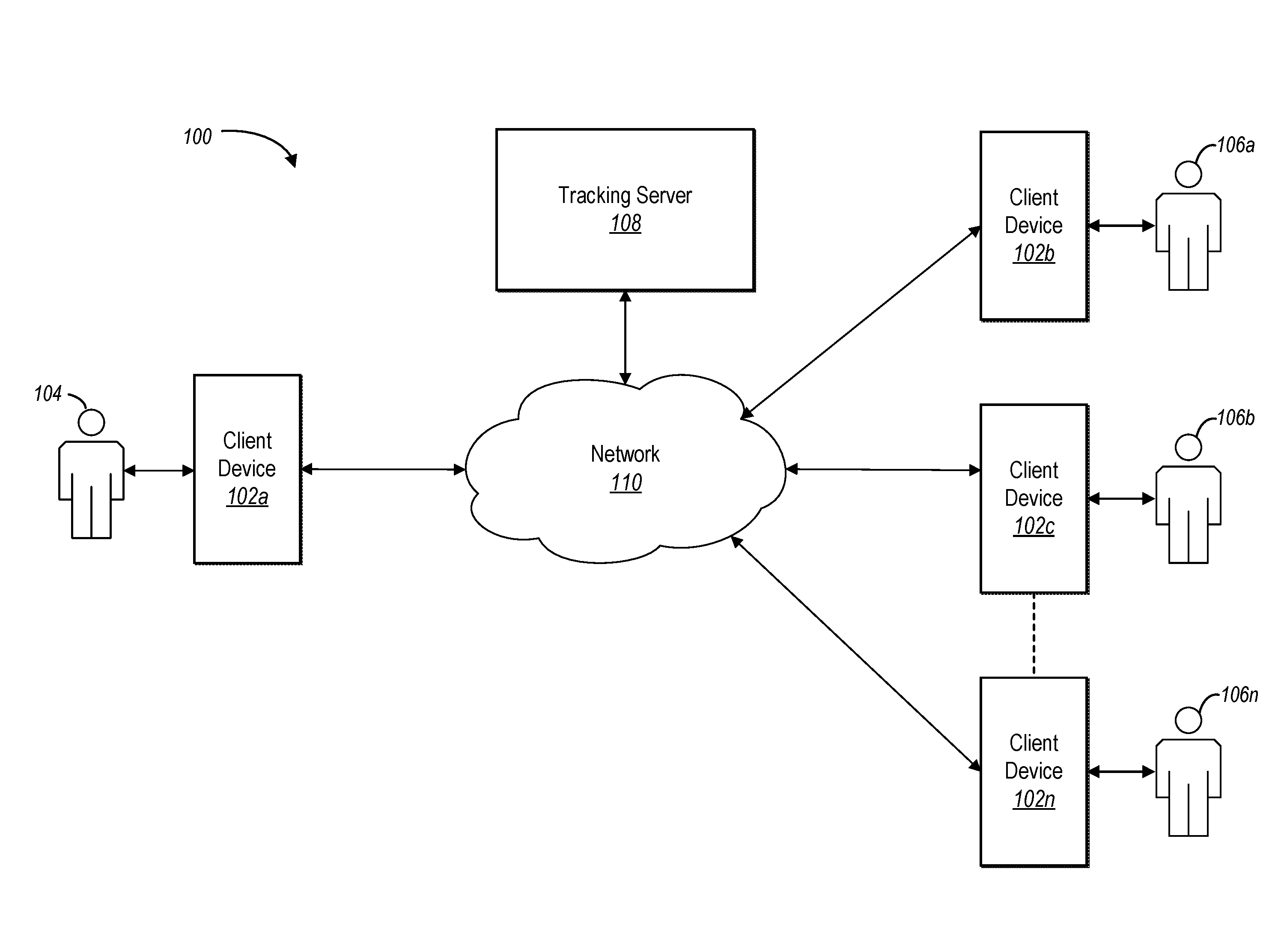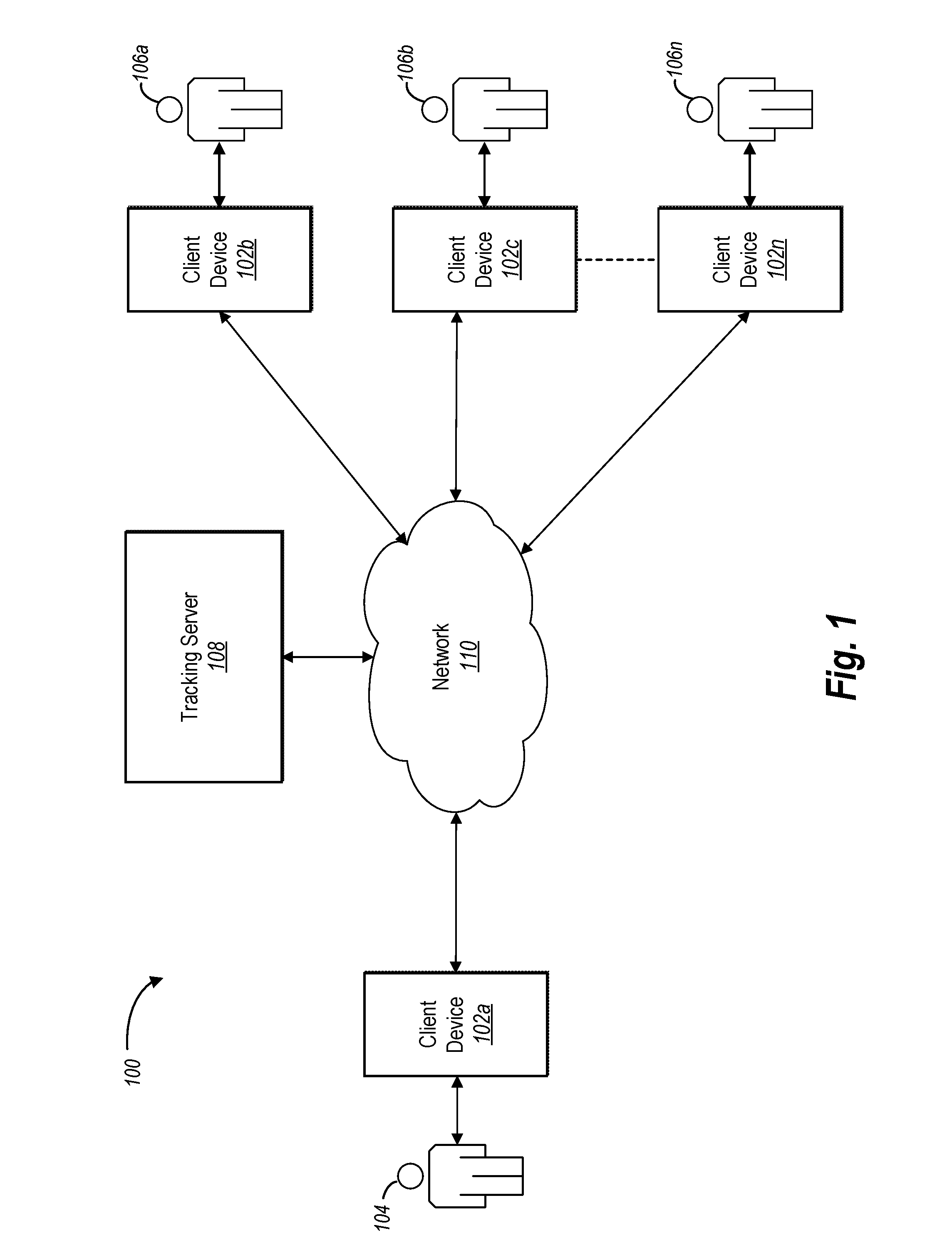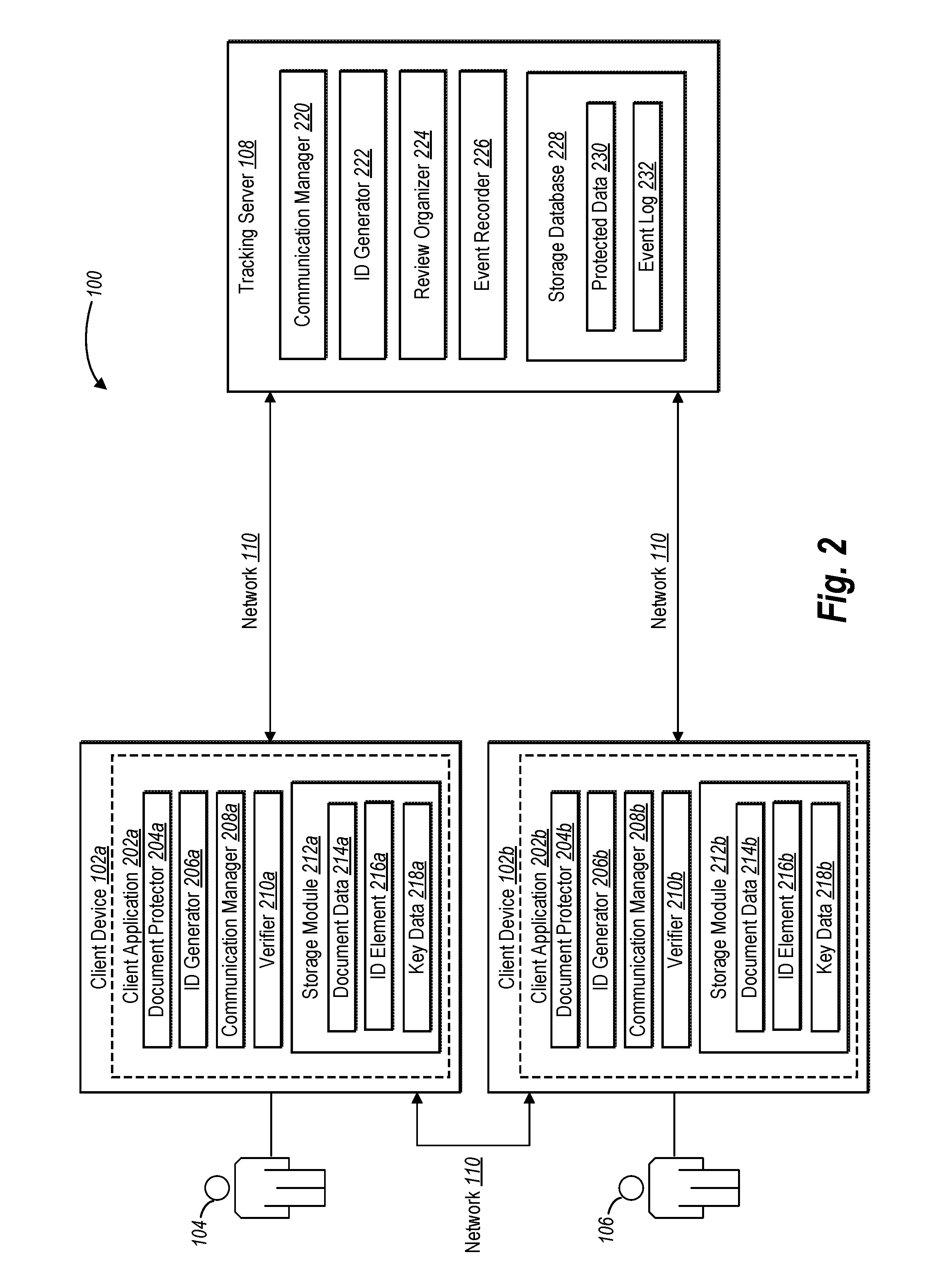Privacy preserving electronic document signature service
a document signature and privacy-preserving technology, applied in the field of electronic document signature services, can solve the problems of inability to send sensitive or confidential information to a third party, inability to sign documents, inherent risks, etc., and achieve the effect of convenient electronic document signing, convenient tracking, and preservation of the security of the contents of documents
- Summary
- Abstract
- Description
- Claims
- Application Information
AI Technical Summary
Benefits of technology
Problems solved by technology
Method used
Image
Examples
Embodiment Construction
[0026]One or more embodiments of the present disclosure include an electronic document signature system that preserves the security of an electronic document while tracking a signature process corresponding to the electronic document. The electronic document signature system can include a tracking server in communication with one or more client applications running on one or more client devices. In particular, using a client application on a client device, an originating user can protect an electronic document and then submit the protected document to a tracking server for distribution to one or more participating users (e.g., users required to electronically sign the document). The tracking server receives only a protected version of the electronic document such that the security of the electronic document is preserved while stored on the tracking server. Using corresponding client applications, one or more participating users can subsequently receive the protected document from th...
PUM
 Login to View More
Login to View More Abstract
Description
Claims
Application Information
 Login to View More
Login to View More - R&D
- Intellectual Property
- Life Sciences
- Materials
- Tech Scout
- Unparalleled Data Quality
- Higher Quality Content
- 60% Fewer Hallucinations
Browse by: Latest US Patents, China's latest patents, Technical Efficacy Thesaurus, Application Domain, Technology Topic, Popular Technical Reports.
© 2025 PatSnap. All rights reserved.Legal|Privacy policy|Modern Slavery Act Transparency Statement|Sitemap|About US| Contact US: help@patsnap.com



